Article by Celia Wickham // Feb. 26, 2019
‘A Fortnight of Tears’, Tracey Emin’s latest major exhibition currently on display at White Cube in Bermondsey (London), features a vast range of work, from neon and sculpture, to paintings and drawings, to photographs and film. The exhibition focuses intensely on feelings of loss, love, memory and desire, and, in their charged emotionality, the works vivaciously spill out and refuse to be contained. In this way, there is both a simultaneous desire for physicality and tactility, and at the same time an enormous sense of grief, spectrality and failure. The works ask us: how do we keep hold of the things that are constantly slipping away? Just out of grasp, it is through these vulnerable slippages that we are granted entry into Emin’s emotional world, as she shares with us both her incredible losses and her colossal desires.
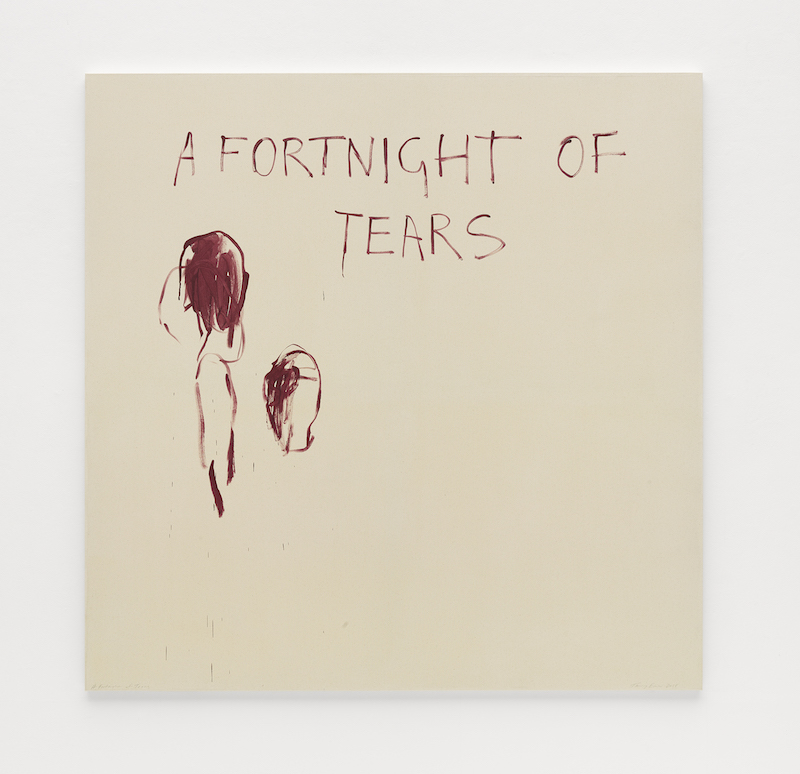
Tracey Emin: ‘A Fortnight of Tears’, 2018 // © Tracey Emin. All rights reserved, DACS 2017. Photo © White Cube (Theo Christelis) Courtesy White Cube
In her acrylic paintings on canvas, Emin makes use almost entirely of pinks and reds, as she abstractly depicts parts of the female body that spill out and are released, exhibiting the boundless mode in which Emin expresses herself. For the artist, there is a failure in being held within one thing or one particular place and, instead, a freeing fluidity emanates. These painterly leakages that are demonstrated so boldly also connote themes of death, abortion and sexuality, which can be witnessed throughout many of the works within the exhibition.
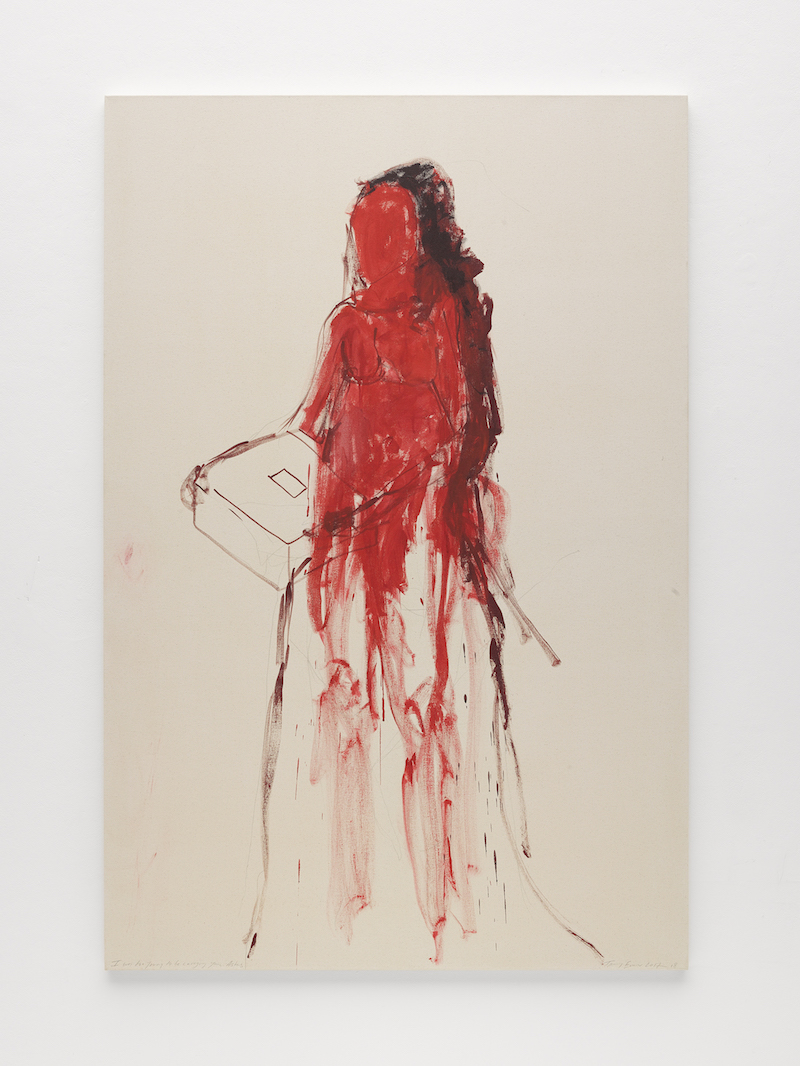
Tracey Emin: ‘I was too young to be carrying your Ashes’, 2017-2018 // © Tracey Emin. All rights reserved, DACS 2017. Photo © White Cube (Theo Christelis) Courtesy White Cube
This characteristic expressive and vivid style can also be seen in Emin’s drawings and sketches, many of which are displayed in glass display cases. In this way, we are let in to Emin’s process, as a thinker, maker and artist. It is as if she has given us pieces of herself to siphon through and, although they remain behind a glass pane, their display feels starkly intimate and voyeuristic. Despite being separated from us, whether behind a display case or up on a white gallery wall, the chaos of lines and colours in the works carries with it an excess of emotion and plentitude. Vigorous lines break and never quite connect and there are blank empty spaces that have been left unfilled. However, in these spaces of lack, there also exists a space for life’s fullness and celebration.
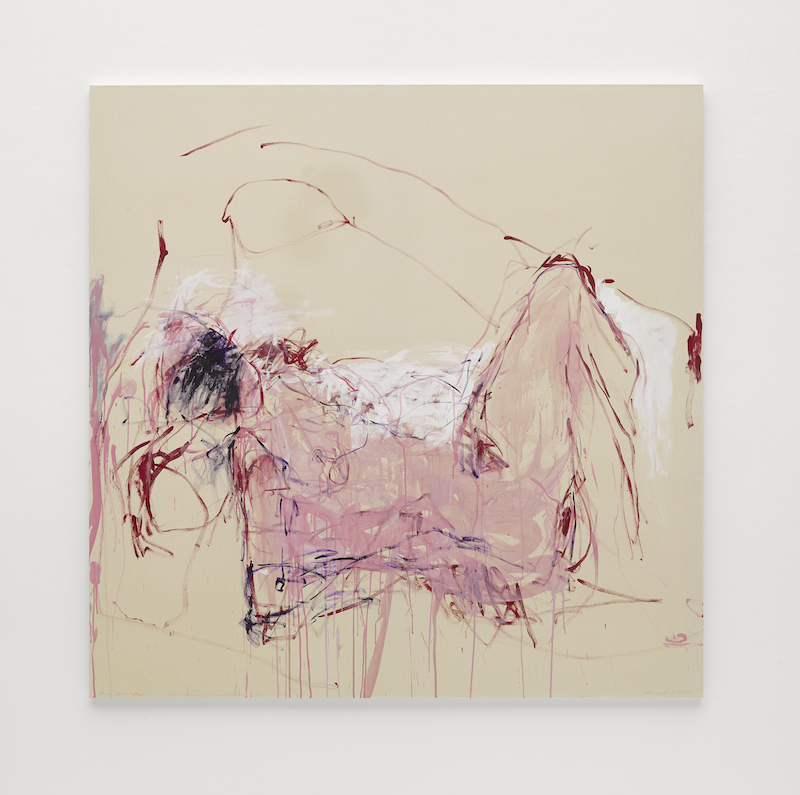
Tracey Emin: ‘It was all too Much’, 2018 // © Tracey Emin. All rights reserved, DACS 2017. Photo © White Cube (Theo Christelis). Courtesy White Cube
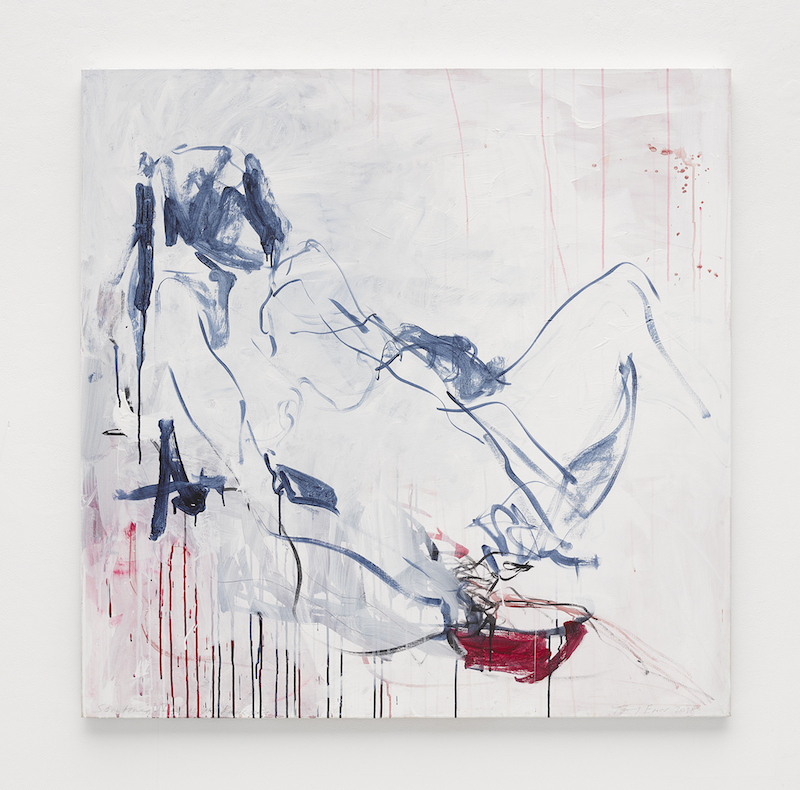
Tracey Emin: ‘Sometimes There is No Reason’, 2018 // © Tracey Emin. All rights reserved, DACS 2017. Photo © White Cube (Theo Christelis) Courtesy White Cube
The work complicates the question of what it means to fail; to strive for but not achieve. Emin brings us into her solitary contemplations and negotiations, asking us what can be found within these gaps, absences and losses. In this meditative stillness, we find them pulsating and brimming with intimate desires. Bare canvas and emptiness becomes a space to gather oneself after turmoil and loss. In such stark contrast to the vibrant lines and colours, the works remind us of the loneliness that exists intermingled and at the edges, as the work carefully holds us there. In this way, Emin shows us that even within vitality and passion, there is a place right beside for failure and grief.
Emin works through complicated emotions, especially the loss of those she has fiercely loved. For example, the death of her mother is explored throughout the exhibition, but is perhaps dealt with most directly in her sculptural piece entitled Mother. The sculpture—one of the largest and most concrete pieces in the entire show—depicts a large bronze figure bent over on the floor in a maternal pose. In its heaviness is a poetic contradiction, as it stands to represent the greatest disappearance, loss and failure of them all.
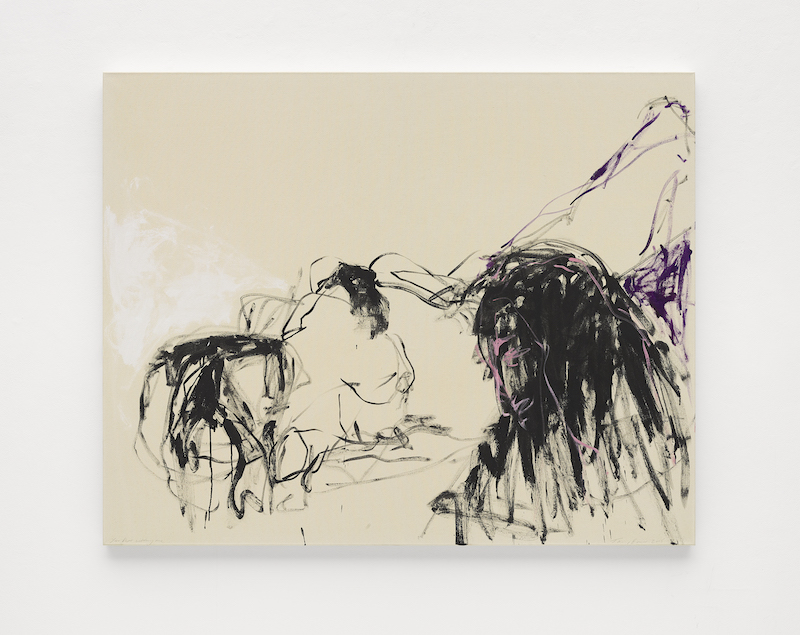
Tracey Emin: ‘You Kept watching me’, 2018 // © Tracey Emin. All rights reserved, DACS 2017. Photo © White Cube (Theo Christelis) Courtesy White Cube
Only in dream time is Emin able to connect with the loves of her past, memories that become ghostly and haunting, slowing fading as the day draws near. A neon installation brightly reads: “I longed for you – I wanted you. The only place you came to me was in my sleep. Too far for me to touch, with time you slowly disappear. The distance of your heart.” The bright and shiny suspended letters feel almost masochistic, in their simultaneous celebration and torment. A second bronze sculptural piece depicting a woman’s figure lies before the neon words, giving in and bowing down to a dream of the past. We are continually reminded, however, that Emin cannot reach this dream state she so deeply yearns for, demonstrated most notably through her photographic self portraits of her insomnia and sleepless nights. The photographs take up an entire gallery room, as Emin repeatedly depicts herself alone in the darkness, trapped between two worlds.
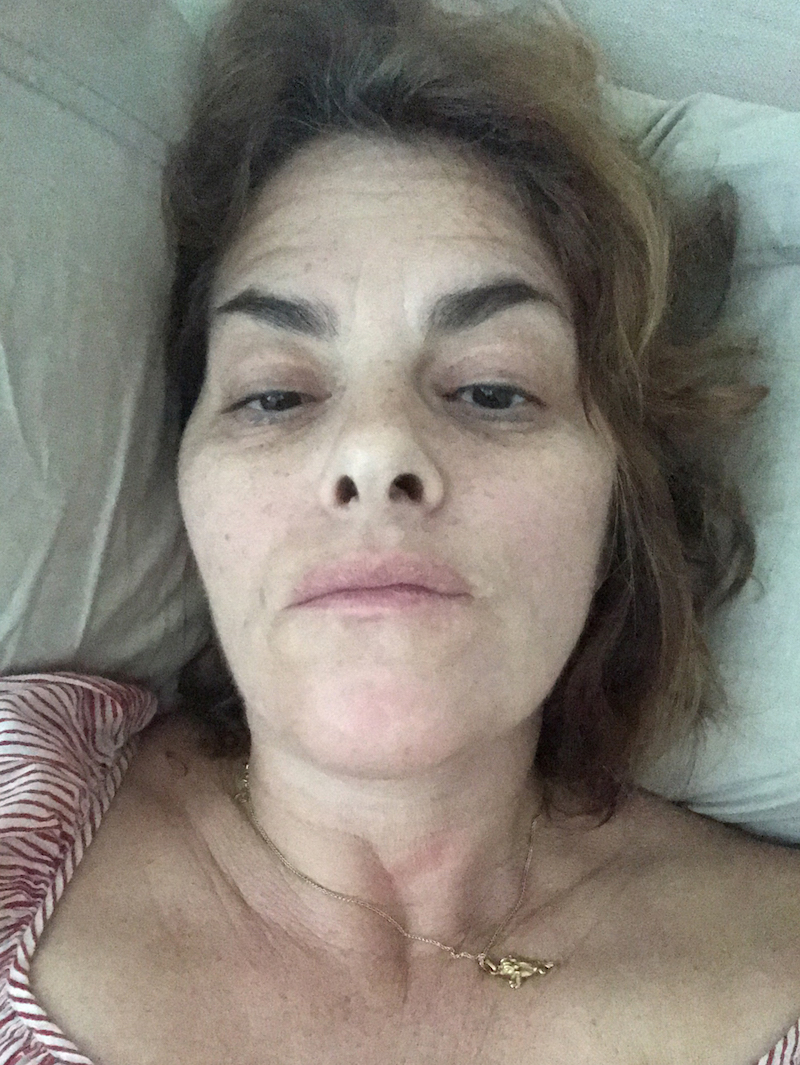
Tracey Emin: ‘Insomnia 14:39’, 2018 // © Tracey Emin, courtesy
White Cube
Through Emin’s displays of loss and failure, the works become a point of refuge, and even a potential place for recovery. It is through these passionate failings and grapplings with grief that Emin liberates herself, boldly taking on the position as boundless artist and maker. Perhaps these bounds are known and considered, but ultimately ignored and broken apart, as she makes the choice to pursue a creative and emotional life of bravery, vitality and love. Whether this be through her photographic and video work, her sculpture and installation, or her paintings and drawings, we are let in on her pain, and there is no looking back.
In Emin’s works, the self and the body become exaggerated and emanate wildly. This is not a gentle and feminine fluidity that can be easily categorised, but one that is messy, leaves a stain, cannot be washed away or made clean. It is work that leaves a scar that may never heal. In this way, it fails. But perhaps in these emotional and emboldening punctures the work magnificently succeeds. It demonstrates what an artistic life—lived with passion, desire, destruction and grief—truly looks like. Her visual depiction is a nakedness that is strong and beautiful, and it is impossible not to feel the weight of this when viewing each piece. If one thing can be said of Emin’s work, it is that it does not fear to feel. And what it feels, is so much.
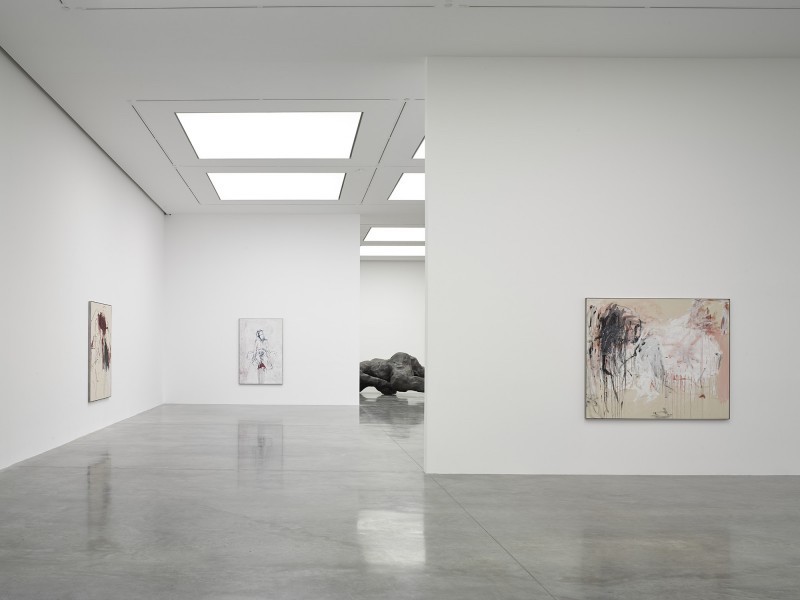
Tracey Emin: ‘A Fortnight of Tears’, 2019, installation view at White Cube Bermondsey // Courtesy of White Cube Bermondsey
This article is part of our monthly topic of ‘Failure.’ To read more from this topic, click here.
Exhibition Info
WHITE CUBE BERMONDSEY
Tracey Emin: ‘A Fortnight of Tears’
Exhibition: Feb. 6 – Apr. 7, 2019
144 – 152 Bermondsey Street, London SE1 3TQ, click here for map





















